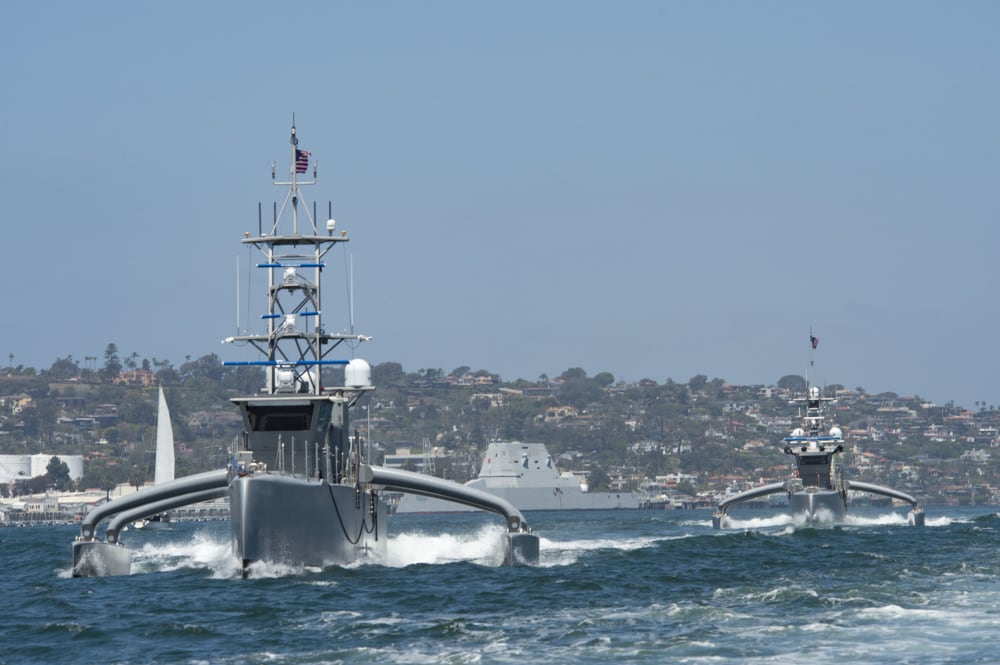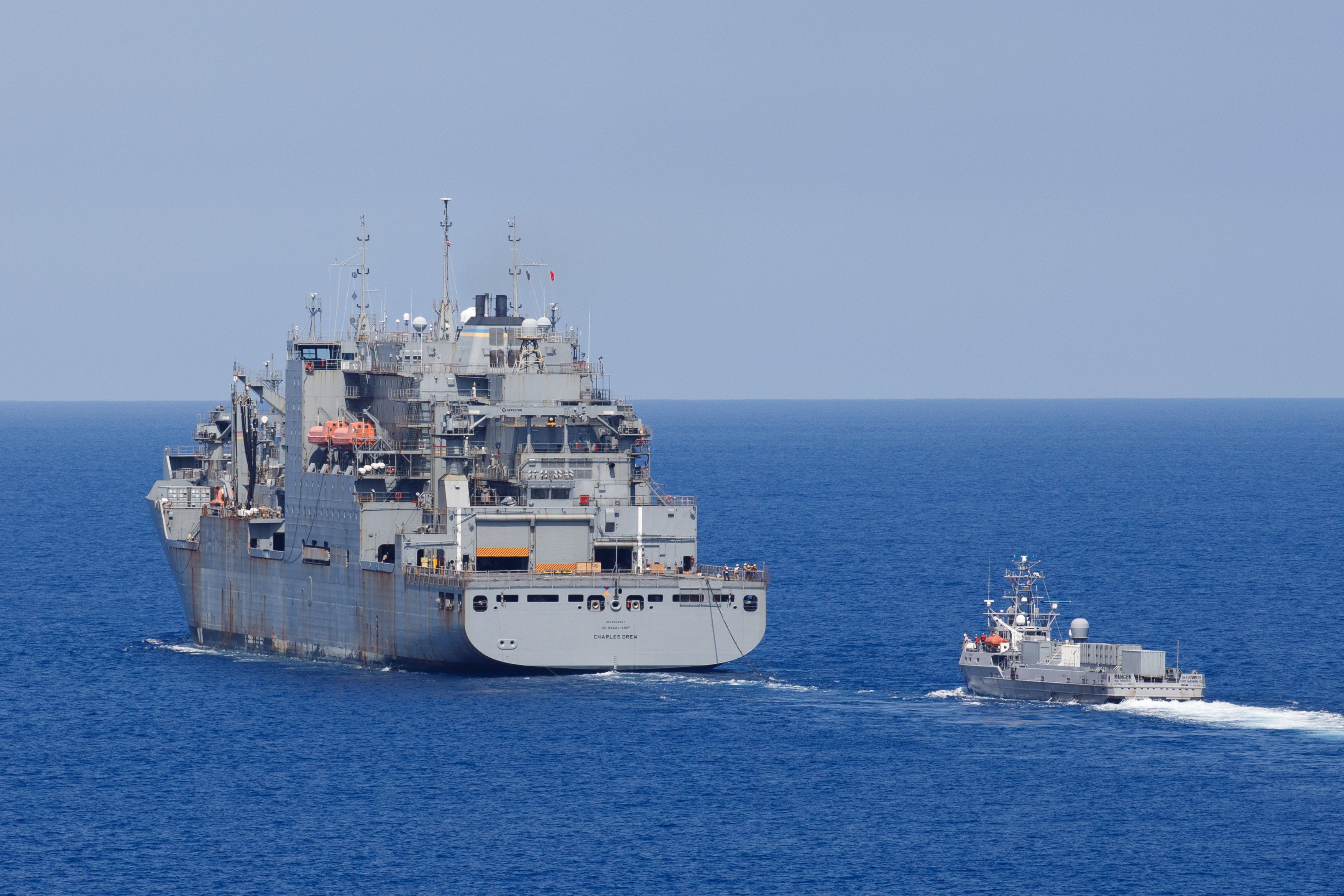Unmanned surface vessels Ranger and Mariner pulled into Fleet Activities Yokosuka Sept. 18, becoming the first Navy USVs to visit Japan.
The vessels, assigned to Unmanned Surface Vessel Division 1, have been taking part in the Integrated Battle Problem 23.2 exercise, which aims to test and advance concepts and capabilities for medium and large USVs in the Indo-Pacific. The exercise is the first to use USVs in the U.S. 7th Fleet area of operations.
“Unmanned and autonomous technologies are key to growing our distributed maritime operations framework,” said Rear Adm. Blake Converse, deputy commander of U.S. Pacific Fleet, in a Navy news release. “By proliferating our presence in the Pacific and increasing the fleet’s situational awareness and lethality, we give ourselves more options to make better decisions at all levels of leadership.”
The Navy stood up USVDIV-1 in May 2022 to help expedite the integration of unmanned vehicles into the Navy’s fleet. Along with the Mariner and Ranger, the command also includes medium unmanned surface vessels Sea Hunter and Sea Hawk, which participated in the 2022 Rim of the Pacific exercise.
Integrated Battle Problem 23.2, which kicked off in August, is the third multi-domain unmanned capabilities exercise under Pacific Fleet’s experimentation plan, the Navy said. The exercise aims to facilitate the development of USV concepts as USVDIV-1 works in conjunction with type commanders.
RELATED

“Our approach is focused on integrating, exercising, and refining tactics, techniques and procedures for immediate application into real world operations with the fleet,” Cmdr. Jeremiah Daley, commanding officer of USVDIV-1, said in a Navy news release.

“We continue to turn fleet feedback from exercises into adapting technology and requirement generation in order to provide realistic and impactful capabilities that future USV programs of record will bring to the Navy,” he said.
USVDIV-1 also participated in Large Scale Exercise 2023 last month, which brought together 25,000 Navy and Marine Corps personnel to test their ability to coordinate large scale formations while tackling realistic scenarios akin to what they might experience in conflict.
The exercise included six carrier strike groups — two live and four virtual — spread across all seven U.S. fleets. The USVs integrated with the aircraft carrier Carl Vinson and its strike group during Large Scale Exercise, according to the Navy.
Vice Adm. Scott Conn, the deputy chief of naval operations for warfighting requirements and capabilities, told Defense News in April that the Navy is shooting to operate both manned and unmanned platforms within the next 10 years.




